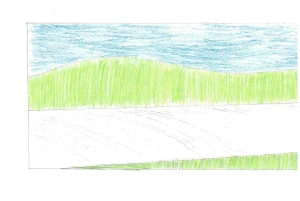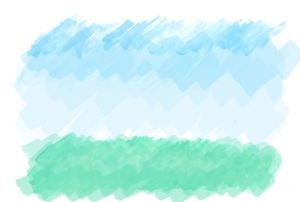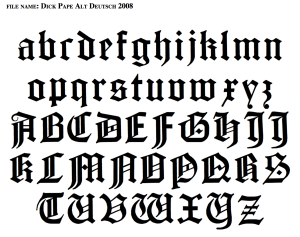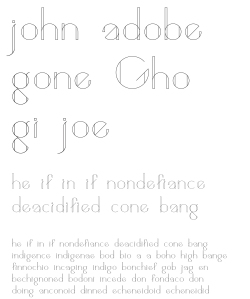Hello reader, for this post I am going to talk about the process I went through to conduct an interview with a graphic designer. I got the opportunity to interview Jon Allison, the art director for a branding and marketing agency called RedTrain. Be sure to check them out! He provided some excellent answers and gave a little insight as to what makes a graphic designer. The interview will be at the bottom of this post.
When looking for a designer to interview, I thought a good place to start looking would be the RGD website. From there, I found a local RGD (registered graphic designer) named Jon Allison. If you’re someone looking to get some design work done, I highly suggest checking this website. Better yet, go check out RedTrain! Anyway, I sent an email out to Jon asking if he would participate in my interview, and within a day I got a reply back saying yes. Once I had my interview questions all ready, I sent them out to Jon and once again I got a response almost immediately. And what a great response it was!
I have three very important pieces of advice that I got out of the interview that I want to share. Firstly, process work is crucial! It shows there is as much strategy in a design as creativity. It develops the reasons inside of your design, and your design most certainly needs reasons. You should stray away from doing things “just because.” This leads to my second important piece of advice: have a reason for everything that you do, and have thick skin for criticism. Criticism is a natural and healthy part of the design industry, and helps make your designs better. Be open to ideas! Finally this point here leads into my third piece of advice: design for the client. You will develop your own abilities and understanding in graphic design, but ultimately you aren’t producing for yourself, you’re producing for your client.
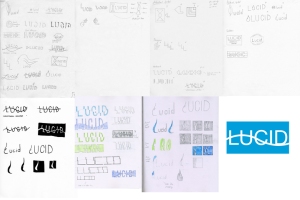 Process work I went through to design a logo for a school project
Process work I went through to design a logo for a school project
I must say, I enjoyed this interview process and I got some great advice to help myself as a graphic designer. I hope you got something out of this as well and are able to apply what you learned to your own practices. Please read the interview below to learn more, and feel free to share your own thoughts! What would you consider to be the most important piece of advice?
’til next time, John.
INTERVIEW
(JL) What kind of clients do you work for? Restaurants, small stores, big companies?
(JA) I work for a variety of clients, typically small to medium sized businesses. My client range includes: restaurants, real estate brokers/agents, dentists, car dealerships and various trades just to name a few.
(JL) What sort of education did you take to get to where you are?
(JA) I graduated from Liberty University with a bachelors degree (4 years) in Studio and Digital Art: specializing in graphic design. However, the key to success is not as simple as a degree, although it is important. It’s the mentors along the way and the willingness to develop your own abilities and understanding within your field. Because at the end of the day it’s about what you produce for your clients.
(JL) Do you think process work is important? Do your clients like to see it?
(JA) Process work is crucial! Some clients do like to see it, it helps to show them that as designers there is as much strategy involved as creativity. Fact is, every designer should be doing process work for the sake of the integrity of their work. As a designer, everything I do has a reason, hence “designer.” The process work is the strategy that develops these reasons. It is important to, not only have the big idea, but to know why it’s effective and why other ideas aren’t as effective. This is a difficult transition for many young designers to overcome as it’s not just about have a great looking logo or campaign. It’s about developing the most effective logo or campaign for your client. Every client is different, which is why a good designer can continually produce good work. Because even though every client is different, the process remains the same, just with different objectives in order to meet the varying needs of various clients.
(JL) What is the best advice you can give to new designers?
(JA) The best advice I can give to a young designer is to have a reason for everything you do, be confident in your ability, but never be cocky and be sure you have a thick skin as criticism is a natural and healthy part of our industry. Finally, you’re designing for your clients, not for awards or for your portfolio.
(JL) Do you have a personal set of rules that you like to follow when you design? If so, what are they?
(JA) The principles and elements of design are pretty straight forward.
P: proximity, alignment, repetition, contrast, balance, harmony, unity, etc.
E: line, shape, direction, size, texture, colour, value, etc.
In terms of personal rules I don’t necessarily have “rules,” but I certainly have values.
- As I mentioned earlier I have a reason for everything I do, nothing is “just cause.”
- I always listen to the client, seeking to understand their business (who they are and their goals) as well as they do.
- I always try to remain positive, times can certainly be stressful, every business is. It’s the nature of the beast. But at the end of the day I love what I do and it is an absolute privilege to be able to use my abilities to help clients be successful.
- I always seek to help others understand what I do. All the work is based on a relationship with my clients, not just doing my thing and hitting them with a bill
(JL) Bonus Question (if you have time):
Where do you think graphic design is headed in the future?
(JA) Graphic design has a bright future, people are beginning to understand the value and importance of good design.
However, there are still those out there that call themselves “designers” who aren’t experts in the field charging a low rate for their services. Although they are cheap, their work reflects it. These people are lowering the industry for everyone causing people to undervalue designers and the entire industry.
Fortunately, RGD is playing a major role in separating professionals from these “designers”. With this, the standard for genuine professional designers is being raised, as it should be. Clients invest a lot of money into design, branding and marketing, it’s important they invest in a professional whose work results in a good return on investment (ROI).
With all that being said, take a look around. Society is heavily influenced by design. People who are able to think differently are the one’s making an impact. Graphic design is one of the industries leading this movement. As designers, we are problem solvers and visual communicators.



